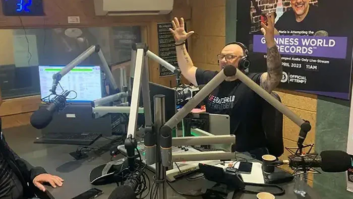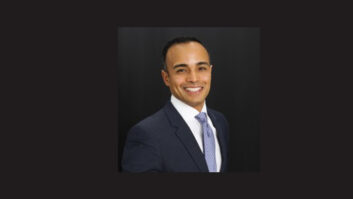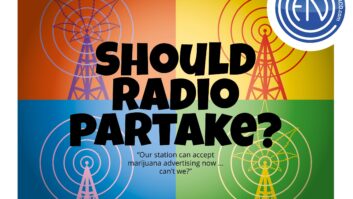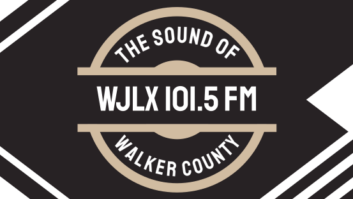When discussing the proposal to fit AM stations into Channels 5 and 6 on the VHF band (“A Few Points About Channels 5 and 6,” Nov. 7), I’m glad someone at the Broadcast Maximization Committee finally acknowledged this inconvenient fact: the FCC’s proposed confiscation of 120 MHz of TV band spectrum and the repacking of thousands of DTV stations into 40 percent less spectrum.
This will obviously necessitate the need for Channels 5 and 6 by television broadcasters (yes, yes we all know low-band VHF is kinda lousy for DTV).
Speculation among low-power TV broadcasters and translator owners is that VHF will probably be our new home — and there are thousands of us.
But wherever LPTV and translators end up is beside the point. And the key point is this: Putting AM stations on another band does not solve the problems of the AM band itself.
As noted, assigning AM stations on Channels 5 and 6 requires new radios and FM translators that will never replicate an AM station’s full coverage.
If Commissioner Ajit Pai is serious about an AM revitalization initiative, then the FCC needs to consider how AM stations can improve the listener experience within the band itself — not elsewhere. It may involve tighter regulations on unlicensed devices in addition to the boost in power that Mr. Pai suggested.
If all digital AM is the answer, then the commission needs to examine iBiquity’s “annuity for life on the backs of radio stations” license scheme.
Whether iBiquity acknowledges it or not, their licensing arrangement is a major impediment to many stations adopting HD Radio, particularly in small markets. And given that there are relatively few HD Radio receivers in the marketplace, perhaps the commission still has time to consider another digital system for AM such as DRM, or to resurrect and mandate AM stereo.
And if another band must be considered, how about petitioning the FCC to open up the shortwave bands for domestic use?
Another problem AM station owners face is land-use issues regarding their transmitter sites. The land is often worth more than the towers sitting on it; and many people have taken a NIMBY approach to allowing transmitter towers into the neighborhood.
Can the FCC do more to encourage the development and rapid implementation of new, more compact antenna designs for city use? How about the use of a single-frequency network for AM?
Whatever can or can’t be done in this area, the fact remains that unless the clouds part and a miracle happens in Congress or with the commission, television broadcasters are going to be forced into a much smaller slice of spectrum. And should that happen, we will need Channels 5 and 6 for ourselves.
Daniel Brown
Owner/Station Manager
KSLN(LD) Channel 46
Morro Bay, Calif.
AM Call to Action
It’s late Friday night and I just finished reading the latest round of thinking as it pertains to digital AM radio.
It was mentioned that there needs to be a change of thinking, to use the mostly vacant TV channels just below the current FM band. To be honest, I have beat that horse to death and have nothing to show for my efforts.
But what better way to offer some form of relief to AM broadcasters that is actually a plus? I know that some would say, “Wait, there are no receivers available to tune FM in the old TV channels.” But with current technology, that argument just doesn’t hold water.
In fact, I have a 20-year-old receiver that will tune the entire TV band and play stereo FM. With the advent of software-defined radios, there is no excuse not to consider this option seriously.
I understand that there is the government factor; but if they are as serious as they say they are about lending a hand to AM broadcasters, they have to change their thinking.
Unfortunately, all they can think about is broadband. How many Wi-Fi systems do they think we need? Yes, there is serious clogging of the 3G and 4G systems; but that’s what happens when you mass-market something that will break your network. This was very poor planning. The same can be said for the massive growth of cell phones. Why was this growth a surprise?
There is still no excuse to refuse the idea that two TV channels could solve a world of problems, with little fuss.
My original proposal would give AM broadcasters a first shot at any new addition to the FM band that would be created. Obviously, some broadcasters would not move, but at least they would be offered the chance to advance their lot in life.
Currently, due to FCC policy, we have 15,000 radio stations. In quite a few markets, the dial is saturated with stations trying to survive in the radio forest.
We need to be serious about getting some room to thin out the herd of stations. If room was created to move AM stations into the VHF band, there would be room, and a level playing field for all. From there, it’s a matter of what content makes the winners and losers.
Yes, a move would be a financial burden to a number of stations; but would the move ultimately benefit the station involved? In many cases, the answer would be a firm and resounding yes.
The other fly in the ointment is receiver manufacturers. No one can deny that they tend to drag their feet getting current technology to market. Again, with the advent of SDR technology, there is no reason for this to be the case.
It’s up to the power brokers whether this change happens, or we are left in the same stalemate as we are now, trying to patch a fix.
Michael Payne
Twin Falls, Idaho
Take Me Out to the Ball Game
Nicely done article (“Play-by-Play Could Use a Pep Talk,” Oct. 18). The only thing I can add is a recommendation to use a crowd microphone at games where there is little crowd noise.
A good example is baseball. Hearing the crack of a bat and the crowd cheering will triple the excitement and enjoyment of a game on radio. Remember, the audience can’t see the game. If the play-by-play announcer is in a closed booth with little or no sound getting in, the listener can easily feel left out of the fun.
Mark Persons
M. W. Persons and Associates Inc.
Brainerd, Minn.
Author Mark Persons is a contributor to Radio World.












